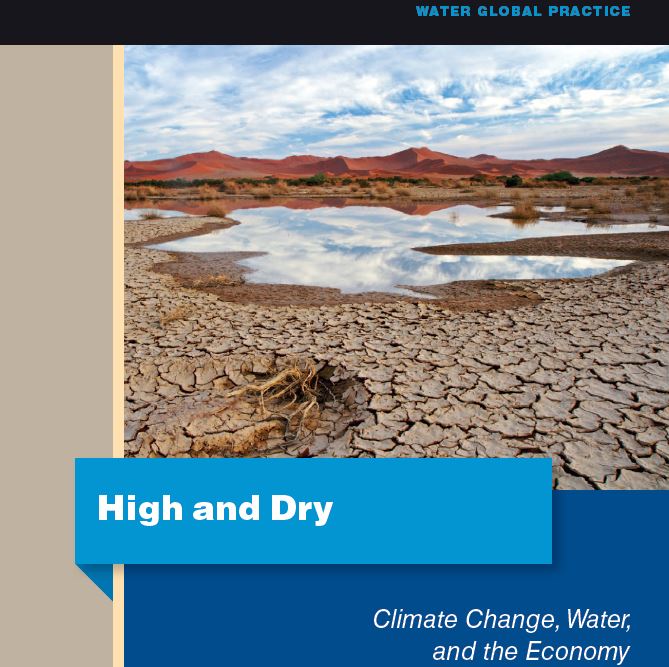HIGH AND DRY. CLIMATE CHANGE, WATER, AND THE ECONOMY-Executive Summary
The impacts of climate change will be channeled primarily through the water cycle, with consequences that could be large and uneven across the globe. Water-related climate risks cascade through food, energy, urban, and environmental systems. Growing populations, rising incomes, and expanding cities will converge upon a world where the demand for water rises exponentially, while supply becomes more erratic and uncertain. If current water management policies persist, and climate models prove correct, water scarcity will proliferate to regions where it currently does not exist, and will greatly worsen in regions where water is already scarce. Simultaneously, rainfall is projected to become more variable and less predictable, while warmer seas will fuel more violent floods and storm surges. Climate change will increase water-related shocks on top of already demanding trends in water use. Reduced freshwater availability and competition from other uses—such as energy and agriculture—could reduce water availability in cities by as much as two thirds by 2050, compared to 2015 levels. Economic growth is a surprisingly thirsty business. Water is a vital factor of production, so diminishing water supplies can translate into slower growth that cloud economic prospects. Some regions could see their growth rates decline by as much as 6 percent of GDP by 2050 as a result of water-related losses in agriculture, health, income, and property—sending them into sustained negative growth. Economic modeling described in this report suggests that bad water-management policies can exacerbate the adverse growth impacts of climate change, while good policies can go a long way towards neutralizing them (map ES.1). Some regions stand to see growth accelerate as much as 6 percent with better water resource management. The impacts of water mismanagement are felt disproportionately by the poor, who are more likely to rely on rain-fed agriculture to feed their families, live on the most marginal lands which are more prone to floods, and are most at risk from contaminated water and inadequate sanitation. Ensuring a sufficient and constant supply of water under increasing scarcity will be essential to achieving global poverty alleviation goals. Changes in water availability and variability can induce migration and ignite civil conflict. Food price spikes caused by droughts can inflame latent conflicts and drive migration. Where economic growth is impacted by rainfall, episodes of droughts and floods have generated waves of migration and statistical spikes in violence within countries. In a globalized and connected world, such problems are impossible to quarantine. And where large inequities prevail, people move from zones of poverty to regions of prosperity which can lead to increased social tensions. This is why water management will be crucial in determining whether the world achieves the Sustainable Development Goals (SDGs) and aspirations for reducing poverty and enhancing shared prosperity. Water is the common currency which links nearly every SDG, and it will be a critica
